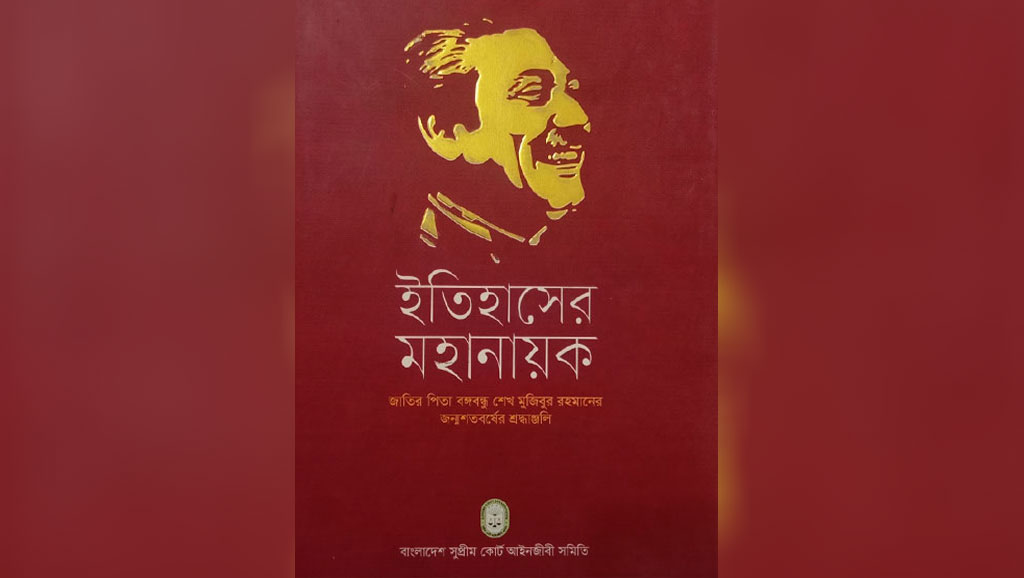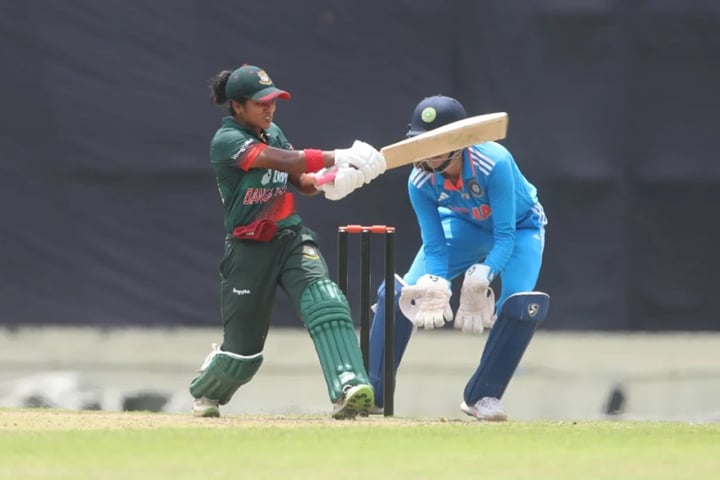A Superhero of the History : an outstanding Publication
The book arrived in my notice quite lately. Published by the Bangladesh Supreme Court Lawyers Association a a part of commemoration of 'Mujibbarsha', there is no doubt that 'A Superhero of the History' was published in continuation of the clamor of publication about Bangabandhu across the country. The compiled writings are heartwarming indeed. It became a unique book in the crowd of thousands of useless writings occupying the publication industry.
The current learned attorney general A. M. Amin Uddin is in the editorial board of the compilation. Other associates are Md. Moniruzzaman, Imtiaz Farooq, Bakir Uddin Bhuiyan, Md. Humayun Kabir and Mohammad Moshiur Rahman. All of them are the then leaders of the Supreme Court Bar Association and renowned lawyers as well.
But we all have a regret. That is, the amount of work being done on Bangabandhu is unorganized and inadequate compared to what is needed. The universities also did not come forward with much interest in such research oriented works. Although 'Bangabandhu Chair' has been established in various universities, the hostels have been named. Even many buildings in the country have been named after Bangabandhu. Once an essayist lamented, 'Bangabandhu is limited only to bridges, hostels, roads, buildings, universities, museums. But beyond these, he is the whole of Bangladesh. He is mixed in every dust of every inch of this country.' This is the real Bangabandhu, his true identity.
It cannot be denied that Bangabandhu's life and work have not been compiled even today. As there was no analysis or research on Bangabandhu's overall life and activities, his philosophy, doctrine, governance. Although there was much criticism on the political part of the program of his second revolution, there was not the least discussion or criticism on its economic, social program. His vision remained unchallenged. None of his colleagues, followers - came forward to shed light on the matter. Rather, he remained silent for fear of being criticized by the detractors. No significant research has been done on the program of the Second Revolution.
On the other hand, many books on Bangabandhu's life and work are available in the market. Most of the authors are anonymous. Many books are not even worth touching. Unfortunately, real Bangabandhu is absent in those writings. No evaluation, no analysis. After reading many books, it seems that those should be discarded. Those who were companions of Bangabandhu did not come forward to write memoirs. The politicians created by him have also shown miserliness in this regard. If they had written, then a lot of information about Bangabandhu and contemporary history would have been available. And because it did not go away, unnecessary lies about Bangabandhu have increased. He has been the victim of propaganda the most. But end of the day he has come out as an enlightened person, the best son of the Bengali nation.
Everyone should read the memorial book 'Itihaser Mahanayak' to know the enlightened and greatest Bengali father of the nation, Bangabandhu Sheikh Mujibur Rahman. In this book Bangabandhu's daughter Hon'ble Prime Minister Sheikh Hasina and Bangabandhu's other daughter Sheikh Rehana wrote two memoirs. The country's best jurists, well-known judges and a number of famous intellectuals of the country have contributed in this anthology; through which the life and works of the Father of the Nation have been truly glorified. The writings will be very useful for those who will do classical research about him in the future.
Others who wrote in this memorial book: Justice Iman Ali, Justice Md. Nuruzzaman, Justice Obaidul Hasan, Md Nurul Islam Sujan MP, Sh Rezaul Karim MP, Barrister Sheikh Fazle Noor Tapas, Md Mahbub Ali MP, Justice M Inayetur Rahim, former Law Minister Abdul Matin Khasru, Justice Shamsuddin Chowdhury Manik, Yusuf Hossain Humayun, Abdul Baset Majumder, Syed Rezaur Rahman, Dr. Harun-ur-Rashid, Prof. Dr. Mizanur Rahman, AAMS Arefin Siddique, Prof. Dr. Mizanur Rahman, Harun Habib, Kashem Humayun, Mohammad Manjurul Islam, Md. Moniruzzaman, Imtiaz Farooq, Md. Bakir Uddin Bhuiyan, Md. Humayun Kabir and Md. Moshiur Rahman.
Apart from this, several chapters dealing closely with Bangabandhu's life and politics have been inserted, which will be very essential for the readers. For example, a chapter has been inserted on what prominent citizens of the international arena have commented on Bangabandhu. The books written by Bangabandhu are also included. There is also a chapter on Bangabandhu's speech in Bengali to the United Nations General Assembly. 130 pages beyond the main article are filled with such rare discussions. That is why the book is different from other publications. Another notable aspect is the important inclusion of photographs from various periods along with a brief biography of the Father of the Nation.
The Supreme Court Bar Association has performed a national duty by publishing this memorandum. In the crowd of thousands of cheap books, a thoughtful book is the hope of the age. This is one such publication. But there are some limitations about the book. It is not a very accessible book. Although the publication was administered Pathak Samabesh, any interested reader will not find the book in market. Only Supreme Court lawyers can collect the book. I hope that the respected editorial board will try to overcome these limitations of the book in the next edition and make it more universal and accessible.
Anisuzzaman Sohel, a prominent painter of the country, designed the cover of the 'A Superhero of the History' memorial book. He deserves special thanks.
Author: Supreme Court lawyer, former banker and filed first complaint against Bangabandhu's killers
10 Feb 2024,16:40




















 Live Tv
Live Tv









